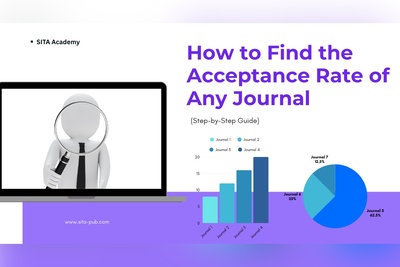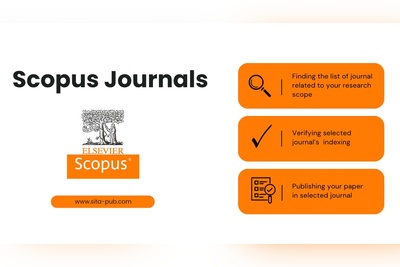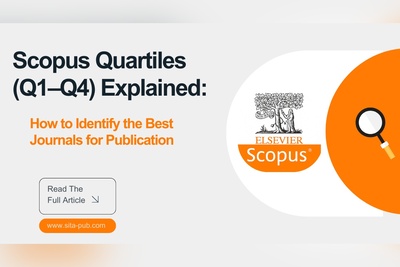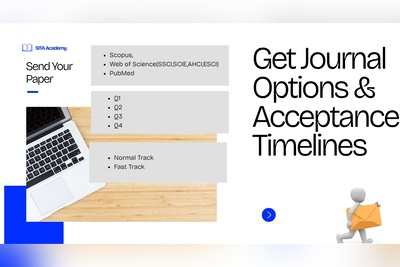Publishing in Medical Journals: Costs, Tips, and Top Journal Recommendations
Discover how medical professionals can publish their research successfully. Learn about medical journals, publication costs, indexing, quartile rankings, open access, and practical tips.
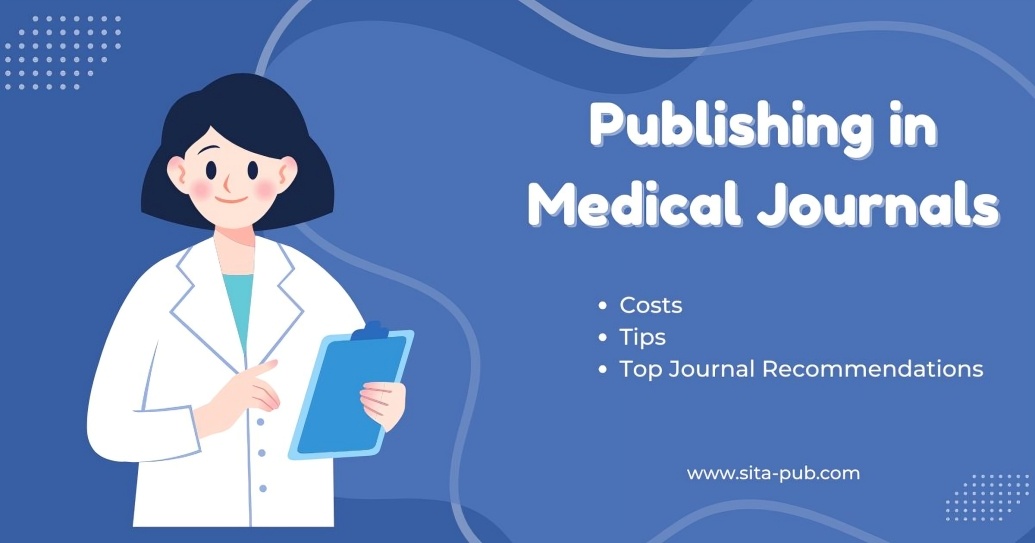
Why Medical Professionals Publish
Medical research is a cornerstone of healthcare advancement. Publishing research helps disseminate new findings, improve patient care, and build professional credibility. Different groups of people in the medical field have unique motivations for publishing:
Doctors and Clinicians: Publishing allows doctors to share clinical experiences, report on rare case studies, and propose new treatment strategies. This not only contributes to global knowledge but also strengthens their academic profile and opportunities for promotion.
Pharmacists and Pharmaceutical Researchers: They often publish studies on drug efficacy, safety, interactions, and new formulations. Publication in reputable journals can enhance collaborations with pharmaceutical companies and support regulatory submissions.
Medical Students and Residents: Students and trainees publish to gain experience in research, improve their curriculum vitae (CV), and increase the chances of securing residencies or scholarships. Early publications are often critical for academic career progression.
Public Health Experts and Epidemiologists: These professionals publish findings on population health, disease trends, and health interventions to influence policy decisions and improve community health outcomes.

Publishing is not only about recognition; it also advances the entire medical field. Articles in peer-reviewed journals validate research, encourage evidence-based practices, and guide future studies.
What Are Medical Journals?
Medical journals are peer-reviewed publications that focus on medicine, healthcare, pharmacy, and related fields. These journals provide a platform for researchers to share knowledge with a global audience. Common types of articles include:
Original Research Articles: Detailed reports of new studies, clinical trials, or laboratory research.
Clinical Case Studies: Documenting unique patient cases or medical observations.
Review Articles: Summarizing current knowledge on a specific topic.
Systematic Reviews and Meta-Analyses: Combining results from multiple studies to provide stronger evidence.
Some of the most respected medical journals include The Lancet, JAMA (Journal of the American Medical Association), New England Journal of Medicine (NEJM), British Medical Journal (BMJ), and Clinical Pharmacology & Therapeutics.

Not all journals are the same. Some focus on general medicine, while others specialize in areas like cardiology, oncology, infectious diseases, or pharmacology. Choosing the right journal ensures your research reaches the appropriate audience.
How Much Does It Cost to Publish an Article in a Medical Journal?
Publishing costs vary depending on the journal’s reputation, open access policies, and additional services. Here’s what you need to know:
Indexing
Indexing refers to the inclusion of a journal in recognized databases. Indexed journals are more widely read and cited, which increases the visibility of your research. Common databases include:
Scopus: Offers a comprehensive listing of journals across all scientific fields, with metrics like CiteScore and quartile ranking.
Web of Science (WoS): Provides impact factor rankings and citation data.
PubMed/Medline: Focused on biomedical literature, widely used by clinicians and researchers.
Publishing in an indexed journal ensures your work reaches a broader audience and is recognized in academic evaluations.
Quartile Ranking
Journals are often ranked in quartiles based on their impact factor and citation metrics:
Q1: Top 25% of journals (highest impact)
Q2: 25–50%
Q3: 50–75%
Q4: Bottom 25%
Higher-quartile journals are more prestigious, but they may have stricter acceptance criteria. Publishing in Q1 or Q2 journals can enhance career progression, grant opportunities, and institutional recognition.
Open Access Policy
Some journals are open access, meaning anyone can read the article online without a subscription. Open access increases visibility and citation potential but often comes with higher publication fees. Typical costs range from $1,000 to $5,000, depending on the journal and article type.
Additional Fees
Certain journals may charge extra for:
Color Figures or Images: Some journals include black-and-white figures in the base fee, while color images incur additional costs.
Supplementary Materials: Additional datasets, videos, or extended tables.
Fast-Track Review or Early Publication: Journals may offer expedited review for an extra fee, reducing the time from submission to publication.
Understanding these costs upfront helps researchers plan their budget and avoid surprises.
Approximate Publishing Fees for Medical Journals Based on Indexing and Open Access Options
Journal Type / Indexing | Approx. Fee (USD) | Open Access Option | Notes |
Scopus-indexed, Q1–Q2 Medical Journals | $2,000 – $5,000 | Usually available, extra $1,000–$3,000 | High-impact journals, more competitive |
Scopus-indexed, Q3–Q4 Medical Journals | $500 – $1,500 | Often optional, $500–$1,000 | Moderate impact, faster review possible |
PubMed/Medline Indexed Journals | $1,500 – $4,000 | Open access may cost $1,000–$3,000 extra | Widely recognized in clinical fields |
Web of Science Indexed Journals (Q1–Q2) | $2,500 – $5,500 | Open access extra $1,000–$3,500 | Top-tier journals with high visibility |
Journals with Color Figures / Supplementary Materials | $50–$500 per figure / $100–$500 per item | Included in fee for some journals | Optional extras depending on submission |
Fast-Track / Early Publication | $500 – $2,000 | Applies to both indexed and open access | Reduces review time significantly |
Notes for Researchers:
Fees vary depending on journal reputation, publisher, and article type.
Open access increases visibility but comes at additional cost.
High-quartile journals (Q1–Q2) are more prestigious but often have stricter review requirements.
5 Tips for Getting Published in Medical Journals

Publishing in medical journals can be competitive. Here are five practical tips to improve your chances of acceptance:
Conduct a Thorough Literature Review
Before writing, review existing studies in your field to ensure your research fills a gap or offers a new perspective. Demonstrating awareness of current literature strengthens the novelty and relevance of your work.
Focus on Clear and Concise Writing
Medical editors and reviewers appreciate clarity. Avoid unnecessary jargon, write logically, and structure your article so that the introduction, methods, results, and discussion flow smoothly.
Include High-Quality Figures and Tables
Visual data presentation improves comprehension and impact. Use clear graphs, charts, and tables, and ensure they are correctly labeled and referenced in the text.
Related Article
Respond Thoughtfully to Peer Review
If your manuscript receives feedback, address each comment carefully and revise your article accordingly. Demonstrating professionalism and responsiveness increases the chances of acceptance.
Highlight the Clinical or Practical Significance
Editors and reviewers often look for research with real-world relevance. Emphasize how your findings can influence clinical practice, patient outcomes, or healthcare policies to make your paper more compelling.
Top Medical Journal Recommendations
Finding the right journal for your medical research can be challenging. Using reputable databases helps ensure your article is published in a suitable, high-quality journal. Here’s how to search for medical journals in key databases:
1. PubMed / Medline
What it is: PubMed is a free database primarily focused on biomedical literature, including clinical research, pharmacology, and public health studies.
How to find journals:
Visit PubMed Journals (National Library of Medicine Catalog).
Use filters to select subject area, publication type, or open access options.
Review the journal’s scope and guidelines to ensure your research fits.
Tip: Journals indexed in PubMed are widely recognized in clinical and academic settings.
2. Scopus
What it is: Scopus is a comprehensive abstract and citation database covering a wide range of scientific journals, including medicine and pharmacy.
How to find journals:
Access the Scopus Sources List.
Filter by subject area (e.g., medicine, pharmacology, public health), journal type, or quartile ranking (Q1–Q4).
Check the journal’s metrics such as CiteScore, SJR, and indexing status.
Tip: Use Scopus to target journals with higher impact and visibility.
3. Web of Science (WoS)
What it is: Web of Science indexes high-impact journals across multiple disciplines and provides metrics like impact factor and quartile ranking.
How to find journals:
Visit Master Journal List from Clarivate.
Filter by subject area, journal category, or impact factor range.
Check the journal’s scope, review policies, and indexing coverage.
Tip: Journals indexed in WoS are considered prestigious and often preferred for academic recognition.
4. Directory of Open Access Journals (DOAJ)
What it is: DOAJ lists fully open-access journals, allowing free access to articles worldwide. It covers medicine, pharmacy, and related health sciences.
How to find journals:
Go to DOAJ.
Use filters to select subject area, language, or license type.
Review each journal’s editorial policies, peer review process, and fees.
Tip: DOAJ journals are ideal for researchers looking for wide visibility without paywalls.
Pro Tip for All Databases:
Always check the journal’s scope, indexing status, impact factor/quartile, open access policies, and submission guidelines before submitting.
Consider your research topic, audience, and funding availability when deciding between subscription-based or open-access journals.
Criteria to Check Before Final Selection
Before submitting, evaluate a journal based on:
Scope: Ensure the journal publishes articles on your research topic.
Indexing: Check if the journal is indexed in Scopus, PubMed, or Web of Science.
Impact Factor and Quartile: Higher-ranked journals provide more recognition.
Open Access vs. Subscription: Decide if open access is necessary for broader visibility.
Publication Fees: Be aware of article processing charges and extra fees.
Review Time: Some journals have long peer-review processes, while others offer faster publication.
Ethical Standards: Ensure the journal follows COPE or similar ethical guidelines.
By carefully evaluating these factors, researchers can select journals that maximize visibility, credibility, and impact.
Need Help Finding the Right Medical Journal?
At SITA Academy we assist researchers in finding journals across all fields, including medicine. Whether you’re looking for Scopus, Web of Science, PubMed, or open-access journals, we can provide a curated list tailored to your needs.
How to Get Your Personalized Journal List:
Send Your Request: Specify your preferred indexing, quartile, and other requirements.
Provide Your Contact: Enter your email or WhatsApp number.
Receive Your List: We will send you a list of suitable journals along with details on APCs (Article Processing Charges), publication timelines, and other relevant information.
Verified Contact Channels
If you have any questions, inquiries, or would like to learn more about our services, please don't hesitate to reach out to us. Our dedicated team is ready to assist you.








